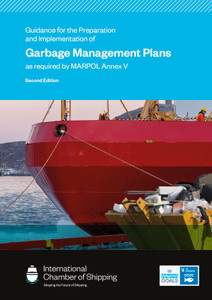
This IMO publication provides guidance on the establishment of an incident management system (IMS) for marine pollution incidents.
An established IMS provides for the safe, effective and efficient management and deployment of resources for all types of emergency incidents. It is essential for effective pollution incident management, providing a clear command structure and well-defined roles and responsibilities within an optimal span-of-control.
The IMS is intended to be staffed and operated by qualified personnel from any agency and is scalable so that it can adapt organizationally based on the needs of the incident. This Guidance document would ideally be used during the contingency planning process in conjunction with the IMO Manual on Oil Pollution, Section II - Contingency Planning and Section IV - Combating Oil Spills.
Foreword
This publication, prepared by the OPRC-HNS Technical Group and approved by the Marine Environmental Protection Committee of the International Maritime Organization (IMO), aims to provide guidance on the establishment of an incident management system for marine pollution incidents.
An established incident management system provides for the safe, effective and efficient management and deployment of resources, both human and material, for all types of emergency incidents and, for the purposes of this publication, for marine pollution incidents in particular. It is essential for effective pollution incident management, providing a clear command structure and well-defined roles and responsibilities, within a defined and optimal span of control.
The system is intended to be staffed and operated by qualified personnel from any agency. A typical incident could involve the use of personnel from a variety of agencies, working in many different parts of the organization.
The system is scalable so that it can easily be adapted to small, medium or large-scale events that may involve multiple agencies and jurisdictions. The system is intended to expand and contract organizationally based upon the needs of the incident. Therefore, the organizational structure is never larger than required.
This Guidance document would ideally be used during the contingency planning process in conjunction with the IMO Manual on Oil Pollution, Section II – Contingency Planning* and Section IV – Combating Oil Spills.
Foreword
1: Introduction
2: Principles of incident management
3: Incident management
4: Response organization
5: Incident action plan
Appendix 1: Glossary
Appendix 2: Responsibility checklists of response functions
Appendix 3: Joint Information Centre
Appendix 4: References
A??s a specialized agency of the United Nations, IMO is the global standard-setting authority for the safety, security and environmental performance of international shipping. Its main role is to create a regulatory framework for the shipping industry that is fair and effective, universally adopted and universally implemented.
In other words, its role is to create a level playing-field so that ship operators cannot address their financial issues by simply cutting corners and compromising on safety, security and environmental performance. This approach also encourages innovation and efficiency.
Shipping is a truly international industry, and it can only operate effectively if the regulations and standards are themselves agreed, adopted and implemented on an international basis. And IMO is the forum at which this process takes place.
- Number of Pages:
- 60
- ISBN:
- 9789280115536
- Published Date:
- May 2014
- Book Height:
- 250 mm
- Book Width:
- 200 mm
- Author:
IMO
- Preview:
- Yes






